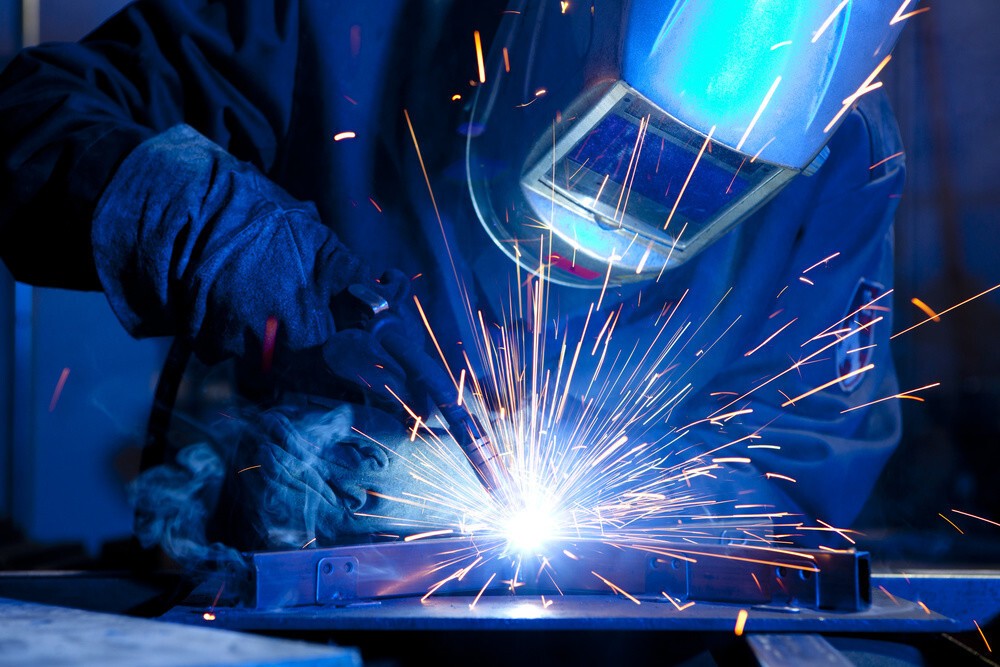Welding is a process that is mainly used for joining metals by different means and processes. Welding is a vast domain that requires years of experience and knowledge to become an expert in this field.
As it is a complete physical job, it is not always easy to start, beginners find it hard to learn, and it also involves severe health risks as you are going to work with fire, electric shocks, fumes, and many other hazards.
Although it is difficult to learn, Welding is a highly paid job, and welders are required in almost every industry. So what is an easy way to learn to weld?
As you may know that welding consist of several methods and techniques, and arc welding is one of them, which is considered as the easiest way to learn and is best suitable for beginners.
In this article, we are going to present you with a comprehensive guide to your first arc welding process. Just read the article till the end, and then you are good to go with your first welding experience.
Table of Contents
What is Arc Welding?
Arc welding is one of the techniques used for welding; it uses electricity to create an arc, which then produces heat to melt and join the metals.
Arc Welding can use both AC and DC current and can generate around 6500°F intense heat for melting. Specialized welding electrodes can also be used for a specific purpose and better performance.
Arc Welding is the preferred method for beginners as it is less risky in comparison, requires fewer components, and is also affordable.
While it can be used in any environmental condition, the machine is lightweight, and it is also a portable method for welding. Unlike other welding techniques, it also does not require an external shielding gas.

Arc welding is further divided into two categories:
- Consumable Electrode Methods
These are the electrodes that are consumed when we use them for welding. The method mainly includes and is not limited to MIG Welding, MAG Welding, Shielded Metal Arc, Flux Cored Arc Welding, and Electro-Slag Welding.
- Non-consumable Electrode Methods
These are the electrodes that are not consumed during the welding process. The method mainly includes TIG Welding and Plasma Arc Welding.
How to start the Arc Welding Process
- Safety is the First Priority
Getting excited about the first try! Do not ever forget about the safety protocols and procedures. Whenever you are going to use the welding machines and equipment, make sure that you are wearing your safety gears such as welding shield, gloves, welding glasses, work boots, and following the standard way for welding and cutting of metals.
- Prepare your metals and equipment.
As you are going to proceed with arc welding, it is always preferred first to wipe out the surface to remove dirt and other materials.
Check your metal pieces if they are clean or not, and then secure the pieces to be weld. If you are welding more than two pieces of metal, you should secure it with a clamp so that it can be welded accurately.
By now, you must have a complete set of tools required to perform this welding process.
- Welding Machine
- Electrodes and holders
- Ground clamps
- Welding metals/pieces
- Safety gears
- Time to Strike an Arc
The next thing is to make sure that you can provide a constant power supply to the welding machine as long as the process last so that it is not interrupted.
Once you have set the machine and the welding metals, it’s now time to start up the process by generating an arc. Meanwhile, make sure that you are sitting in a comfortable position, and you are getting a clear view of everything around you.
As the arc starts, slowly move the tip of it across the parts of joining metals for welding. You may want to rehearsal it before welding the large metals. As you move the electrode, it will start melting and will fill out the pool for the weld.
Try to move it with constant speed and consistency, and do not move it away from the path you want to weld; it may damage the joining metals. If you feel necessary, you may adjust the machine setting accordingly during the process.
After completing the process, let the metals cool down gradually and start removing the remaining slag by grinding. Check for any defects or the parts you have missed. In the end, you may want to apply anti-corrosion material so that it lasts long.
Common Mistakes
When learning a new skill or method, it is most likely that you will make mistakes on the first try. Here we will discuss some common problems and errors which you may face during the welding process.
- Arc Length
Many beginners face this issue when the arc length is too long or too short. Arc length directly affects the voltage resulting in affecting the heat intensity. The longer the arc length, the more voltage it will consume, and the more heat it will generate.
- Arc Moving Speed
Firstly, beginners find it difficult to hold the machine in the correct position, and then comes the moving speed of the arc. For better performance and quality, you need to maintain a constant speed, and it is difficult for beginners.
However, practice makes the man perfect; it is also implied here, you need to practice it before actually starting the welding process.
- Amperage Control
Another important feature for quality output is to ensure a constant power supply with dedicated amperage settings. For beginners, regulating the amperage in between the process is a hectic task; the recommended settings are mentioned on welding rod boxes, so make sure that you are fully aware of them.
Remember that you have all the required knowledge; you just need a little push to start. By thoroughly reading this article till the end, we are assured that you can successfully carry out the arc welding process and can join metals on your own.
